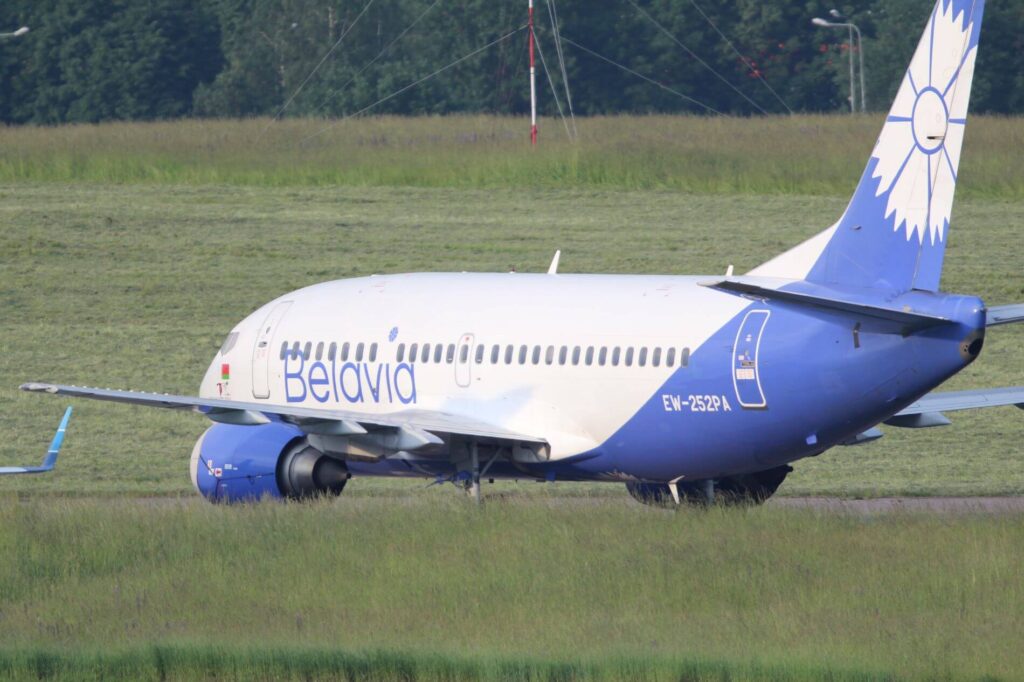For several years now Belarusian national carrier Belavia demonstrated good results, while expanding quickly. Igor Cherginets, Deputy General Director of Marketing and Foreign Economic Activities of Belavia, agreed to tell AeroTime News about the way the current crisis impacted the airline and the way the company handled the world-wide slowdown.
What was the impact of the COVID-19 pandemic on Belavia?
The pandemic introduced some corrections to our plans. We were growing our passenger flow and network every year, we were renewing our fleet. Every month from November 2019 our passenger flow was increasing by 30%, and in February 2020 it increased by 42%. In the beginning of the year, our calculations predicted a growth by 30%-40%, but now we are forced to change our plans.
We were also planning to open new destinations, to start scheduled flights not only to Vienna (Austria) and Tashkent (Uzbekistan), but to Reus (Spain) and Aktau (Kazakhstan) too. In the difficult circumstances of the pandemic, we managed to start flights to Vienna and Tashkent, but the question of opening other destinations will be considered only next year.
Speaking about the program to renew our aircraft fleet, we are keeping our objective of reducing the age of our airplanes by buying new ones. In February 2020, we signed an agreement to receive three next generation Embraer E195-E2s. We are expecting the arrival of the first new plane at the end of December 2020, two more should arrive from the factory in early 2021. This is not mentioning the new Embraer-175, which was added to our fleet in September 2020.
The CRJ-100, the CRJ-200, as well as the Boeing 737-500 and the Boeing 737-300 were completely removed from our fleet in 2020.
What did the company do to manage the situation and stay afloat?
In the circumstances of reduced number of flights, a small part of the fleet was put into storage. It allowed us to create an additional program of aircraft maintenance, follow the airworthiness directives to keep aircraft airworthy, and also renew the interiors.
The rest of the fleet was conducting regular and chartered flights. Repatriation flights became a priority in the first months of the pandemic, so we organized chartered flights in accordance with the task. In mid-June, we renewed chartered flights to Albania, in the beginning of July – to Montenegro, Turkey, Egypt. Thanks to the introduction of substantial changes into our schedule, we managed to avoid the full stop of scheduled flights and even increased frequencies to some destinations.
The remaining flights were conducted with relatively high passenger load (around 75%) and high tariffs. We were mainly conducting transfer flights through Minsk National Airport. All these actions allowed the company to avoid aircraft downtime.
A year ago “Belavia” was making a decision to receive two Boeing 737-8 aircraft. At the time, the stoppage of deliveries was affecting the company negatively. Now Boeing plans to receive a re-attestation of the airliner and return it to the lineup by the end of 2020. What do you think about the long lapse of Boeing 737 MAX 8 deliveries? Are you still waiting for permission to use this model, or have you changed your plans?
Boeing 737 MAX 8 airplanes should have been a part of the renewal of our aircraft fleet, including the replacement of “classics” – the Boeing 737-300 and the Boeing 737-500. On November 18, 2020, the Federal Aviation Authority (FAA) of the United States lifted the ban on the commercial exploitation of Boeing 737 MAX 8 and 737 MAX 9 airplanes. This decision will allow airlines to start conducting necessary procedures to renew the operations with the aircraft, as well as allow Boeing to commence deliveries. The Airworthiness directive, issued by the FAA, explains the requirements that have to be met before airlines can use the airplanes. Those requirements include the installation of the renewed software, the finalization of the changes related to the separation of cables, conducting the training of the pilots in accordance with renewed procedures, preparation of the aircraft after a lengthy storage period.
In 2019, Belavia received several new Embraer ERJ airplanes. Back then, you said that the planes allowed you to increase the frequency of many flights and add Tallinn and Munich to your destinations. Did the significance or the role of these airplanes change during the COVID-19 pandemic? What additional changes had to be done because of it?
Belavia uses Embraer aircraft on many routes. Only the maintenance of the airplanes changed during the pandemic.
In the circumstances of the spread of COVID-19 epidemic, the airline completely meets all the requirements and recommendations of aircraft manufacturers, aviation authorities of the Republic of Belarus, the European Aviation Safety Agency and the Federal Aviation Authority. We also took some special measures to prepare our aircraft for operations, for example, by carrying out additional maintenance works on conditioning systems.
After every flight, special personnel cleans the passenger cabin and staff quarters of our aircraft with disinfectants recommended by aforementioned organizations. Additionally, after every flight conducted from a country that has a high number of coronavirus cases, a supplementary sanitary treatment is carried out.

